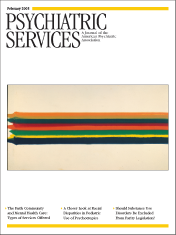Violence Assessment and Intervention: The Practitioner's Handbook
The surge in workplace violence over the past quarter century is a major public concern. Mass killings in places of employment spawn newspaper headlines, radio sound bites, and indelible televised images; yet the most catastrophic violent events constitute only the tip of the proverbial iceberg. Even more familiar to many, through personal experience and accounts from friends, family members, and coworkers, are the less sensational but very disturbing—sometimes terrifying—acts of aggression at work, including verbal threats, assaults, and hostage taking. A veritable industry of consultant services has developed to help employers, to protect potential victims, and to manage violent episodes safely. Workshops and seminars are held for consultants themselves. Violence Assessment and Intervention: The Practitioner's Handbook now makes much of this valuable, practical knowledge available in a handbook.
Clinicians recognize that the nature and extent of a person's potential for violence is a function of context. Therefore, a patient seeking outpatient treatment for mild depression will be evaluated differently than an inpatient who committed murder and was found not guilty by reason of insanity. This book illustrates that evaluations to address the potential for workplace violence can be exhaustively thorough and are not limited to the "instigator" him- or herself. Complexities of the instigator are compounded by the interactive complexities of potential victims and the work environment. Moreover, interventions are also dynamic and must be adjusted, in timing and approach, to the evolving and sometimes explosive situation.
The book's authors, Michael H. Corcoran, Ph.D., and James S. Cawood, C.P.P., are both highly experienced in assessing individuals for risk of violence and recommending preventive interventions. Having served as a municipal police officer and a member of the U.S. Secret Service, Corcoran has more than 30 years of experience in evaluating violent subjects, making interventions, and acting as a consultant for school districts, governments, businesses, law enforcement agencies, and private concerns. Cawood, who worked in the field of violence assessment, violence prevention, and incident resolution for 18 years, reports having successfully resolved 1,800 violence-related cases.
Violence Assessment and Intervention is a "how to do it" manual. Corcoran and Cawood take the reader through each step in conducting a thorough risk assessment and in charting a course of action to reduce the risk. The emphasis is on protecting potential victims from violence. The authors' thorough yet concise treatment of the topic demonstrates how comprehensive and time-intensive a proper assessment for violence can be.
With this approach, the potential instigator is not the only person who is evaluated. Assessment also includes an attempt to determine the "victim's role." From the "domineering" to the "criminal" victim, various victim typologies are described, with practical suggestions on how to most effectively interview victims of each typology. Of course, the instigator is the central focus of the assessment, but within the context of the work environment, which must also be carefully analyzed. A proper evaluation of the victim or victims and the organizational structure will provide guidance on the most appropriate interventions.
Of paramount importance, information gathering requires interviewing multiple individuals and examining many diverse records. With this systematic approach, no potential source of material information is overlooked. The authors explain how to acquire pertinent records, how to draw critical information from individuals through interview, and how to categorize the data in a way that meaningfully contributes to the risk assessment. Immediately following several chapters, including the chapter on information gathering, are appendixes with forms and outlines developed to assist in the methodologic collection and organization of information.
Eventually the consultant will rate the risk of violence as low, moderate, or high. This result is determined with the aid of an assessment grid with multiple sections. Parameters in each section are also rated as low, moderate, or high risk, depending on the nature of the corresponding information. For example, with regard to possessing a firearm, if the firearm is kept at home, the risk is low; if it is carried in one's vehicle, the risk is moderate; and if it is carried on one's person, the risk is severe. Beyond assessing specific parameters on the grid, the evaluator is encouraged to follow up with individualized, contextual questions, not explicitly cued by the parameters themselves.
The law both provides and limits measures that can be taken to maximize victim safety. For example, the option of prosecution, when appropriate, can protect the public through the incapacitation afforded by imprisonment. On the other hand, confidentiality, privacy, and disability law can circumscribe protective options. Protective and restraint orders can either mitigate or exacerbate the risk of violence. Without purporting to give legal advice, Corcoran and Cawood concisely summarize federal laws and explain special considerations vis a vis the dynamics of the individual case. Always the most compelling question is, "Will it protect the victim"? The authors counsel, "Use the right law at the right time, but always have other contingencies to protect public safety"; hence the importance of methodical violence assessment and intervention.
The successful approach to violence prevention is, in a word, diligent "preparation" for a crisis. Not steeped in data and actuarial research on risk assessment, this is a practical handbook that shares the observations, insights, reasoning, and techniques gained from the author's years of experiences in preventing and reducing violence at work and in other settings. Clinicians, personnel managers, and administrators who are interested in improving safety from personal violence will find many useful tips here. For those who consult in order to reduce workplace violence, this book will serve as an especially practical guide and informative reference. The approach described by Corcoran and Cawood is individualized yet methodical, comprehensive yet flexible, and highly dynamic, recognizing the fluid nature of unstable situations.
Dr. Felthouse is professor of clinical psychiatry at Southern Illinois University School of Medicine in Springfield and medical director of Chester Mental Health Center in Chester, Illinois.



